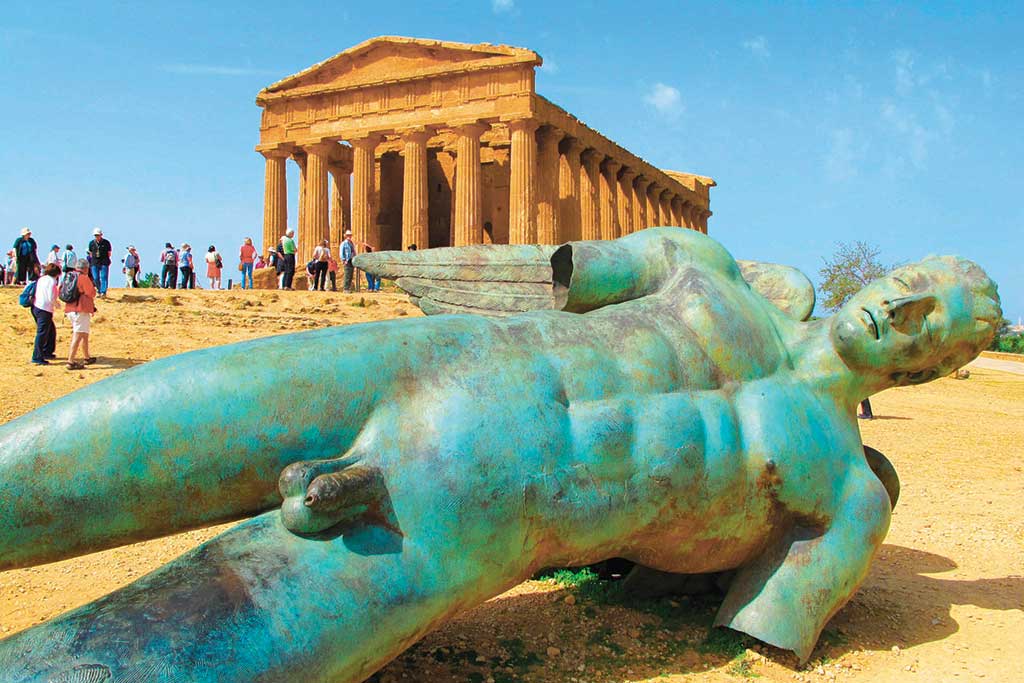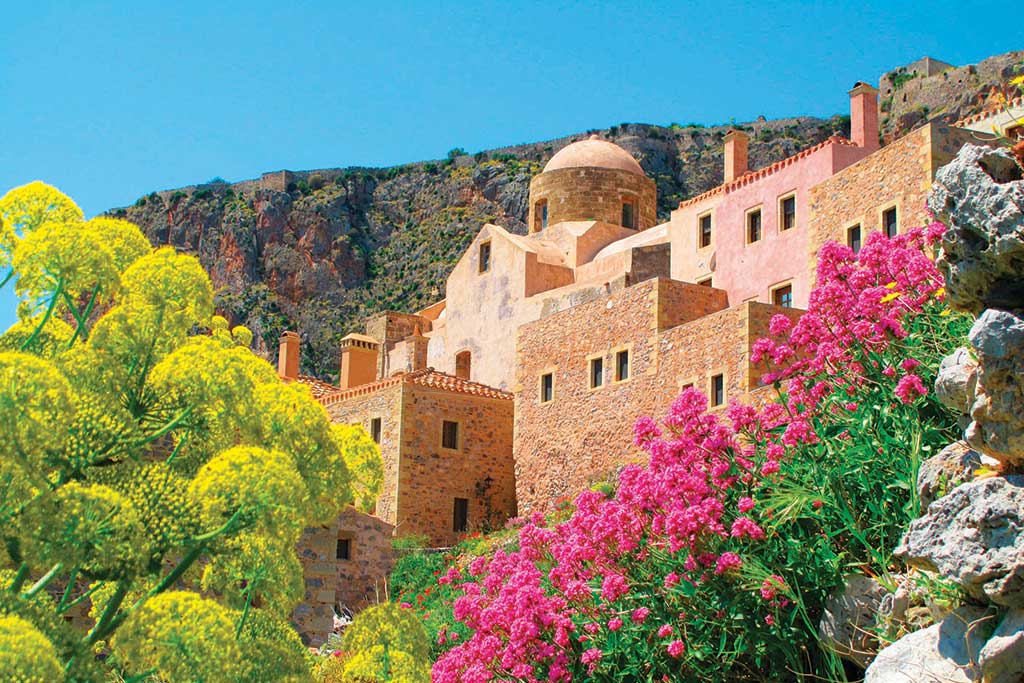The setting sun peeks from behind clouds as the pilot boat veers away from the gunwale, and the harbor captain sends us off with a friendly wave. As the topgallant and jib sails unfurl and catch the evening breeze, we gain speed toward the light- house. The crenelated walls of the ancient city pass by to port, a forlorn island fortress recedes into the distance, and a mega-yacht passes by starboard, the passengers gaze on in wonderment; a clipper ship in full- sail is a majestic sight.
Reclining in the net suspended from the bowsprit, I gaze up at the masts and swelling sails, marveling at the ingenuity of design that sailing ships are, this is one the world’s tallest. Suddenly, someone on the foredeck yells out pointing to the water beneath me. I roll over on my stomach and there 30 feet below two dolphins leap in the bow wave as the prow slices the deep blue. I can’t help but laugh aloud, and revel in this perfect moment, wondering if anything could ever be finer than this!

Star Clipper Crew
Two weeks before in Lisbon, Portugal I admit that I felt some trepidation about spending 17 days on the high seas. Though I love being near and in water, being on water for a prolonged stretch gives me pause. Dockside, as I approach the Star Clipper (www.starclippers.com), my anxiety is assuaged by her sheer size and beauty; all bedecked with teak, varnished wood, and polished brass, one is hard- pressed not to quickly become enamored.
We are introduced to the captain, Sergey Tunikov from Russia, then the welcoming staff escorts my friend, Ruel, and me to our cabin on the lower Commodore Deck. The berths are smaller than on cruise ships, but none-the-less cozy, appointed in navy blue and gold with twin beds, a small desk, a cushioned seat, and adequate closet and shelf space for two. Amenities include a hair dryer, safe, and television, though we never turned it on. Every morning, a newsletter appears containing schedules, seafaring quotes, history, and fascinating sailing stories compiled by the knowledgeable cruise director, Peter Kissner.
Awaiting the mandatory deck drill, my fellow travelers, with cocktails in hand, are getting acquainted at the Piano Lounge where Balasz, an enthusiastic Hungarian, plays the white grand piano. One of the pleasures of a smaller ship (160 passengers on the Star Clipper) is that within days we meet everyone, clicks sort themselves according to language, interests, and imbibing aptitude. We quickly fall in with five fun and boisterous Aussies (Sue and Bob, Sue and Rob, and Bruce); yes, it was confusing at first. When I discover we share an embarrassing fondness for The Sound of Music… well, how could I not love a posse that after downing a couple pints has no shame in belting out “Soon her mama with a girl and goatherd…” Or reenacting “So Long, Farewell” on the ship’s grand double stairway?
During our first day crossing the Gulf of Cadiz, I wander the ship (don’t ever call it a boat!), technically a square-rigged, four-masted barquentine, and my first impression is that of a bewildering web of lines, rigging, and back- stays, each rope with a name and specific purpose. I watch the crew attend- ing to maintenance tasks: in the outdoor Tropical Bar one man repairing sails at an industrial size sewing machine; two men stripping varnish from railings; and near one of two small swimming pools, a man repainting the fore- mast. Once upkeep chores reach the stern, they begin anew at the bow.

Bronze Statue of Fallen Icarus in Valley of Temples Sicily
The Star Clipper and its twin, the Star Flyer, are the world’s tallest sail- ing vessels. Envisioned and funded by Swedish industrialist Mikael Krafft the ships were constructed in 1992 in Belgium and are 360 feet long, 50 feet wide, with a mainmast of 226 feet, and 16 sails. Whenever possible the ship employs wind power (about 85% of the time) and attains top speed of 17 knots, though 11 knots is more common.
The morning dawns bright as we sail into Tangier, Morocco, the spring-green mountains misted with clouds,and it’s our first opportunity to observe the deck crew in a flurry of action as we moor dockside. Spilling down from the fortress kasbah we stroll the ancient medina’s labyrinth of alleyways and bazaars. Passing by the Mendoubia Gardens with its marble fountain and park benches, the Grand Socco (Big Square) divides the medina from the Ville Nouvelle area of Tangier. The square is particularly colorful in the evenings with vendors, including female peddlers in striped foutas and wide-brimmed hats, plying fruit, spices, and second-hand goods.
We continue downhill to the Petit Socco, once the greatest souk in Morocco with folks flocking from miles around to barter for goods. In the 19th century the area grew wealthier with businesses, cafés, hotels, and casinos crop- ping up. The Tangier Grand Mosque, is built on the site of a former Portuguese cathedral that stood on a Roman temple dedicated to Hercules.

Reconstructed buildings on Monemvasia
In the afternoon, we hire a guide, Mustafa, dressed in traditional hood- ed caftan, to drive the 60 km into the mist-enshrouded Rif Mountains to the city of Tetouan. Built in 1307, it was a military point fending off Portuguese soldiers. In 1860 it reverted for a short time to Spain. We spend several hours wandering the souk, poking into shops, taking photos. Oozing with charm, the architecture of the old town and medina is a mixture of Arab and Spanish styles, and the language in the shops is a mellifluous meld of Spanish and Arabic.
Before nightfall, we sail with both the European and African coasts in sight, then past the Rock of Gibraltar, huge and looming 1,400 feet above the labyrinthine town below. Because of its strategic location at the mouth of the Mediterranean it has been fought over numerous times and still remains a bone of bitter contention between the British and the Spanish.
Later that evening, we learn that in Star Clipper’s history, only three passengers have been left in port: once a couple got stuck on a beach; a woman fell in love with her Turkish cab driver; and one of our traveling companions, Bern arrived at the dock in Tangiers as the Star Clipper was already mid-harbor being escorted by the pilot boat. Normally when passengers are late their passports are left behind and they fend for themselves to reach the next port. But when Bern disembarked his ID card wasn’t scanned, the ship thought he was on board, hence he did not have his passport. He would have been royally stranded, so they sent the pilot boat back to fetch him. In choppy water, with a bag of bananas in hand, Bern navigates up the wobbling rope ladder. Chagrined and shaken, he barely emerges that evening from his cabin, and is the butt of many comments. (It turns out that Bern had changed his watch battery, accidentally shifting the time back an hour.) All’s well that ends well, but the fear of Neptune is instilled in us all not to mess with boarding time.


